An excursion into a specialists domain
Michel lists provisionals issued in 1894 and 1899 – stamps of Nicaragua overprinted ‘Mosquito Provisional’ and one stamp overprinted ‘Telegrafo’, used as a postage stamp. The 1894 issues, known as the ‘Mosquito Provisionals’, are widely studied and present a nice example of the controversies one can come across in the stamp collecting world.
Political history
The Mosquito Reserve was established in 1860 with a large degree of self government. The Miskito government was presided over by the Miskito chief Robert Henry Clarence. In 1893, Nicaragua decided to abolish the Reserve. President Zelaya sent General Carlos A. Lacayo to the Reserve and occupied the Reserve in December 1893. In March 1894, a provisional council was appointed to govern the Reserve. The Miskito revolted on 5 July 1894. The Nicaraguan forces withdrew and the Miskito chief again assumed power on 6 July 1894. His rule was short lived. On 16 August 1894, Nicaraguan forces had regained full control over the Reserve. In November 1894, the Miskito voted for integration into Nicaragua. The Mosquito Reserve became the Zelaya Province.
Postal history
In 1894, stamps were issued overprinted ‘Mosquito Provisional’. Subject of the controversy are overprints on 1894 Nicaragua issues – a 1 centavo yellow brown and a 2 centavo vermilion. These stamps are known to exist only used: off cover, on piece and on cover. All known covers were sent by the same person, Dr. Rolando Kuehn, who addressed most covers to himself. The covers were sent between 8 July and 17 August 1894, the period during which the Nicaraguan forces had withdrawn from the Reserve. Rolando Kuehn was an American physician, at the time stationed in Bluefields, the capital of the Mosquito Reserve. Kuehn had developed an interest in stamp collecting and stamp dealing and is known to have sent thousands of covers which he intended to sell on the collectors market. Most of these are quite common. Kuehn became closely affiliated with the Nicaraguan authorities that had occupied the Mosquito Reserve, in particular with general Lacayo.
Where opinions differ
There is no conclusive evidence as to who prepared the overprints. Most resources, however, seem to concur that Khuen not only sent the covers but also prepared the stamps. The controversy focuses on whether he did so by authorization of the proper authorities and if so, by who’s authority: the Miskito government presided by chief Clarence or the provisional council presided by general Lacayo. A few samples of possible opinions:
- Probably the first article on the Mosquito Provisionals was published by the Philatelic Journal of America in July 1894, right after the stamps were issued. The Journal states: “We have been inclined to look with suspicion on the stamps, although there seems a strong possibility of their being genuine.”. The ‘strong possibility’ is substantiated by referring to further overprints and even essays for definitives that had been prepared under the authority of the Miskito government.
- In 1898, the issues were investigated by the American Journal of Philately. The correspondent for the Journal reports from Bluefields: ” I do not consider any of these stamps official, and consider them to be frauds.”. For the American Journal of Philately this “ought to settle the status of these stamps without any question for the future.”. Reality would prove to be different.
- In 1899, William H. Mitchell read a paper to the Brooklyn Institute of Arts and Sciences. Mitchell cited the minutes of the Provincial Council – the provisional council appointed by Lacayo – of June 1894 as the authority for the provisional stamps. William H. Mitchell was a dentist with an interest in stamp collecting and stamp dealing. Mitchell was also an affiliate of Kuehn to whom Kuehn is known to have sent hundreds of the covers he intended to sell on the collectors market.
- Let’s jump from the late 19th century to what is probably the most recent publication on the Mosquito Provisionals: an article by Michael Schreiber in the January 2016 edition of Nicarao, the quarterly magazine of the Nicaragua Study Group. Schreiber concludes: “The stamps could have been authorized by a compliant provisional council, and Lacayo in conspiracy with Kuehn could have authorized Kuehn to produce them.”. Schreiber also states: “Until a cover or multiple covers from senders other than Kuehn come to light, the ‘Mosquito/Provisonal’ stamps should be considered as bogus, even though some covers transited normally through the mail stream to the United States.”.
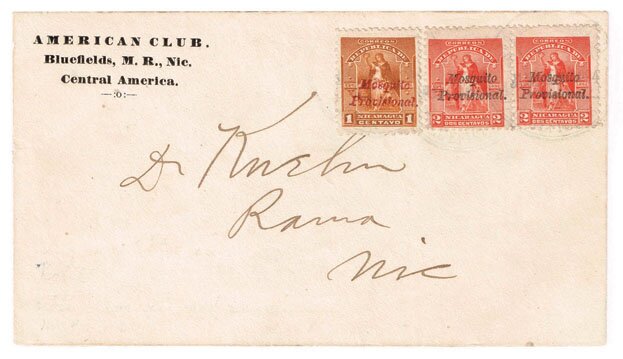
Cover postmarked 16 July 1894. One of the covers sent by Dr. Kuehn addressed to Dr. Kuehn.
Image courtesy of the Nicaragua Study Group.
The Michel listings
Michel, in a short introduction, states:
- The Mosquito Provisionals were issued under the authority of the Miskito government.
- They are presumed to be “genuine provisional issues, free of speculation”.
Michel, furthermore, lists the 1 centavo yellow brown and the 2 centavo vermilion overprints on the 1894 Nicaragua issues as discussed above. Michel furthermore lists a 5 centavo blue also issued in 1894 and two stamps issued in 1899. These, for the moment, remain a topic for further research.
Questions that remain
Although the Mosquito Provisionals have been studied for well over a century, different opinions persist until the present day. And, to me, seemingly obvious questions still remain open:
- If the stamps were authorized by the Nicaraguan authorities, how can Kuehn have mailed the covers with these stamps exactly in the period that the Nicaraguan authorities were ousted? It would seem to make sense that the Miskito government would have prevented the use of these issues.
- If, on the other hand, the stamps were authorized by the Miskito government and Kuehn had been so closely affiliated with the Nicaraguan authorities, why would the Miskito government have authorized Kuehn to produce the stamps?
Conclusion
Fascinated as I am by the above complexity, it might be tempting to have a few specialty collections next to a world wide collection.
← Previous page: NicaraguaNext page: Panama →

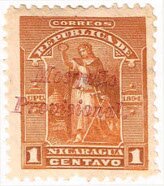
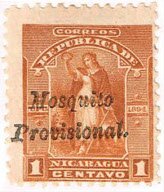
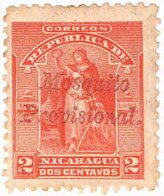
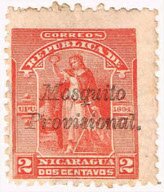
Great investigation into the Mosquito Provisionals Gerben. It is indeed amazing the byways that stamp collecting- and Stamp history- will lead into.
BTW, I will be in the Netherlands (Den Haag) most of March visiting my daughter. If we could get together for a cup of coffee or tea, that would be great!
Thanks Jim. I enjoyed doing a bit more of a specialists research. Tastes like more.
Great you’ll be visiting the Netherlands. I’ll send you my coordinates through email.